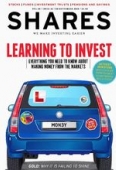Archived article
Please note that tax, investment, pension and ISA rules can change and the information and any views contained in this article may now be inaccurate.
Surveying the ISA landscape

Fewer people are using ISA accounts, but those that do are stashing away more cash – that’s the conclusion of the latest annual release of figures on ISA usage from the Government.
The figures from the Government show the total number of ISA accounts in the 2017-18 tax year, the amounts of money put into ISAs and the split between cash and investment ISAs. They also give the first insight into the take-up of the newest ISA – the Lifetime ISA – with the first year of figures unveiled.
The figures, released last week, show that almost 260,000 fewer ISA accounts were opened in the 2017-18 tax year – with the total number of accounts falling to 10.8m. This marks the lowest number of accounts in almost two decades. However, the biggest hit was to cash ISA accounts, with an 8% drop in the number of accounts, while the number of stocks and shares ISAs rose in the year.
CASH ISAS OUT OF FASHION
The fall in cash ISAs comes as the interest rates offered on cash accounts remain stubbornly low – even despite the Bank of England raising interest rates this month, from 0.5% to 0.75%. At the same time inflation, which is the measure of the rising price of goods, has been above the Government’s 2% target for some time. This means much of the money left in cash ISA accounts is seeing its spending power eroded – putting off savers.
The introduction of the personal savings allowance has also dented the popularity of ISAs – both cash and investment accounts. Launched in 2016, this allowance gives an annual tax-free amount for any interest earned on savings: £1,000 tax-free for basic-rate taxpayers or £500 for higher-rate taxpayers (top-rate taxpayers get no allowance). This tax break covers interest on bank and building society accounts, most investments, peer-to-peer lending and corporate and Government bond interest.
This means that the appeal of ISAs, particularly for basic-rate taxpayers, has reduced. However, for those individuals who are likely to move into the next income tax bracket soon, or those fearful of Government change to the personal savings allowance, it could be prudent to start stashing cash away within the ISA wrapper.
WHAT’S HAPPENING WITH JUNIOR ISAS
Junior ISAs continue to be largely invested in cash, which makes little sense for many savers as the money is locked up until the child reaches the age of 18 – making it the ideal long-term investment in many cases.
A total of 57% of Junior ISA money is in cash, a slight improvement on last year, when more than 60% of money was in cash. There has actually been a decrease in the amount held in cash Junior ISA accounts, of £8m, while more than £50m was invested through Junior ISAs.
Take-up of the accounts has risen for another year, with more than 900,000 children having an account. However, despite the maximum amount you can put in a Junior ISA each year being £4,128, the average subscription for 2017-18 is far below that, at £994. This is the lowest figure recorded since the Junior ISA was launched in 2011.
LIFETIME ISA
The first figures have been released for the Lifetime ISA, giving the initial look at how popular the market has been since the newest ISA was launched in April 2017. A total of 166,000 accounts have been opened and £517m saved – averaging £3,114 per account.
The Lifetime ISA can be used to save to buy your first property or to provide a retirement fund, and you can put away £4,000 into the fund each year. It is available in cash and investment options, and the Government adds a 25% bonus to anything you pay in (up to that £4,000 limit).
HOW ARE OTHER PEOPLE INVESTING THEIR ISA?
The Government figures also give an insight into how other people are investing their ISA money, with a breakdown in the types of investments that people have picked.
In the past year there has been a dramatic increase in the number of investors using investment trusts. The total amount people have invested via investment trusts has risen almost 20%, from £14.5bn in 2017 to £17.3bn in 2018.
Alongside this there has also been a slight increase in the amount ISA investors are putting into shares – of 4% over the year - and a 6% increase in the use of funds.
However, investors have become more cautious in the year, as the amount of money left in cash within stocks and shares ISA accounts has risen – by 17%, from £11.4bn to £13.3bn.
Laura Suter, personal finance analyst, AJ Bell
Important information:
These articles are provided by Shares magazine which is published by AJ Bell Media, a part of AJ Bell. Shares is not written by AJ Bell.
Shares is provided for your general information and use and is not a personal recommendation to invest. It is not intended to be relied upon by you in making or not making any investment decisions. The investments referred to in these articles will not be suitable for all investors. If in doubt please seek appropriate independent financial advice.
Investors acting on the information in these articles do so at their own risk and AJ Bell Media and its staff do not accept liability for losses suffered by investors as a result of their investment decisions.

 magazine
magazine










